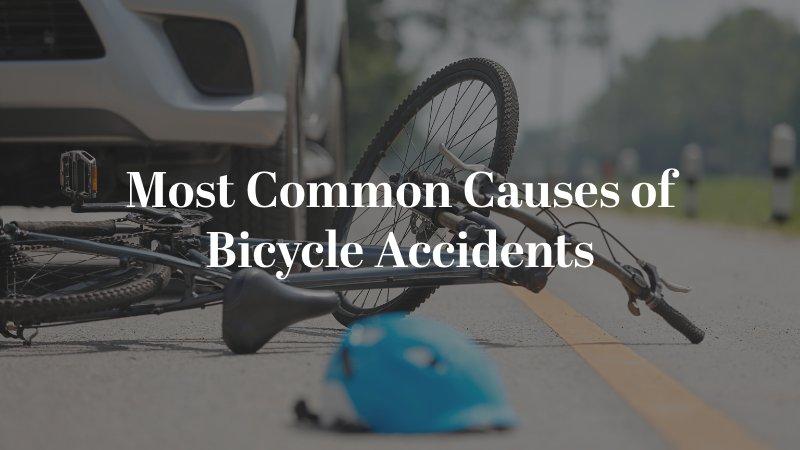The two main types of bicycle accidents in the United States are falls and traffic collisions. According to the National Highway Traffic Safety Association or NHTSA, 966 bicyclists were killed in traffic collisions in 2021.
The most effective way to decrease your risk of bicycle accidents is to know their most common causes and avoid these causes whenever possible. The following provides information about the causes of Denver bicycle accidents and highlights Denver’s bicycle laws.
If you or your loved one suffered bicycle accident injuries due to someone else’s negligence, an experienced personal injury attorney may be able to help.

Common Causes of Bicycle Accidents with Vehicles
Data from the NHTSA cites that approximately 85% of all bicyclist fatalities occur in urban areas, and deaths are highest between June and September. The most significant factor in fatal bicycle crashes with vehicles is failure to yield the right of way.
Other common causes of bicycle crashes with vehicles are caused by a driver:
- Following too closely;
- Distracted driving;
- Speeding;
- Lane drifting;
- Unsafe lane changes;
- Disregarding traffic signals;
- Driving while under the influence of drugs or alcohol; and
- Drowsy driving.
Bicyclists may contribute to their risk of injury by doing the following:
- Failing to wear proper safety gear;
- Riding at excessive speeds;
- Riding on unfamiliar roads;
- Riding under the influence of drugs or alcohol;
- Failing to safely check their bicycle before riding; and
- Riding despite hazardous weather or road conditions.
It is the responsibility of bicyclists and drivers to safely share the road and obey Colorado’s traffic laws and regulations to prevent crashes.
Bicycle Laws and Regulations in Colorado
Motorists and bicyclists are subject to the same traffic laws and regulations in Colorado, except for a new “Safety Stop” law. There are additional laws about bicyclists and interactions between motorists and bicyclists in Colorado.
These laws are as follows:
- Cyclists must ride as close to the curb as possible – either in a designated bicycle lane, on a paved shoulder, or in the right-hand lane.
- Unless:
- Passing another bicycle or vehicle proceeding in the same direction when preparing to make a left turn;
- Proceeding straight through an intersection where the traffic is turning right;
- Reasonably necessary to avoid hazardous conditions, including fixed or moving objects, parked or moving vehicles, pedestrians, animals, or surface hazards such as potholes or debris;
- No bicycle shall be used to carry more persons at one time than the number for which it is designed or equipped;
- No cyclist shall attach themselves or their bicycle to any motor vehicle;
- Cyclists may ride abreast if:
- There is no motor vehicle traffic approaching from the rear within a distance of 300 feet; and
- They are able to fit within one single lane; or
- They are riding on a path or roadway set aside for the exclusive use of bicycles.
Otherwise, cyclists must ride single file:
- The cyclist must keep at least one hand on the handlebars at all times; and
- Cyclists must use hand signals 100 feet in advance of a turn unless both hands are needed to brake or control the bicycle.
Bicyclists share the same responsibilities as motorists, and they also have the same rights. Drivers who recklessly disregard and injure bicyclists may be liable for the bicyclist’s accident-related injuries and other losses.
Contact an Experienced Denver Bicycle Accident Attorney Today
If a driver hit you or fatally injured your loved one, a Denver bicycle accident attorney at Dulin McQuinn Young may be able to help. Dulin McQuinn Young is a dedicated, driven Denver personal injury law firm with the resources to fight for injury victims.
We are a client-focused firm proud to offer the best representation possible. Dulin McQuinn Young offers a risk-free consultation and claim review.
Call our Denver office now to schedule your complimentary appointment with a bicycle accident attorney.